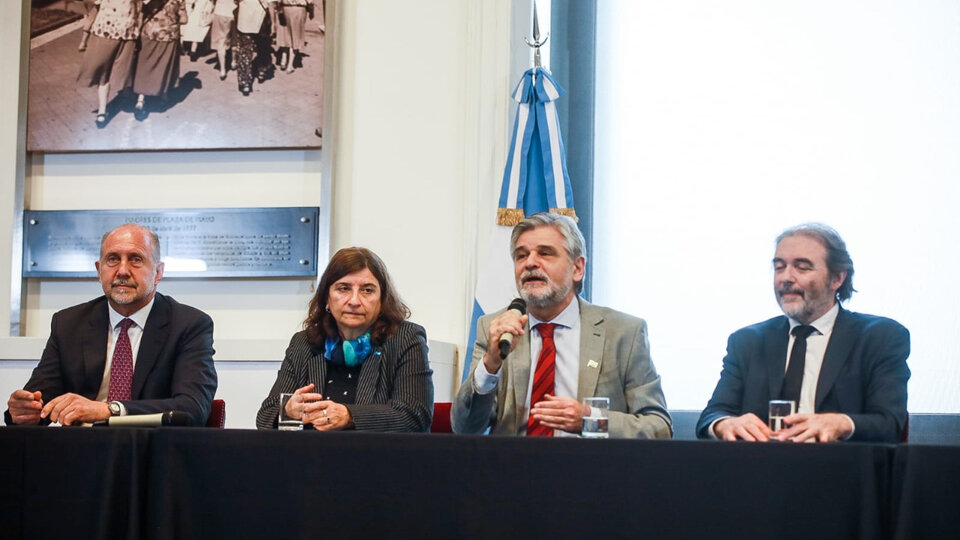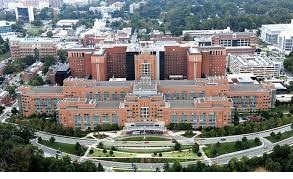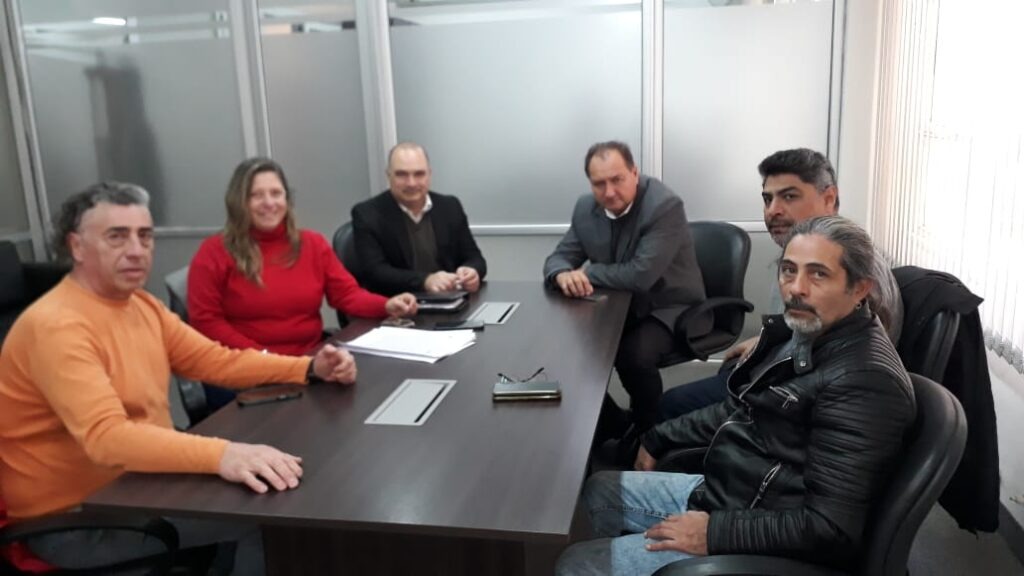With federal standards and a historic investment, the national government has announced the launch of seven public bids to build as many scientific research institutes as possible in different regions of the country. These are infrastructure projects for a total of 3,605 million pesos allocated to the provinces of San Luis, Misiones, Corrientes, Mendoza, Cordoba, Santa Fe and Buenos Aires, in institutes based on Conicet University and National Universities. “We have to put an end to pendulum policies and work to strengthen state policies,” said the Minister of Science, Technology and Innovation, Daniel Filmus, during the announcement. “This type of project, which often gets truncated, is a dream, and today we can be here to take it forward,” Conicet President, Anna Franchi celebrated.
The works, which will be financed through the Inter-American Development Bank (IDB), belong to selected institutes taking into account the federal standard for resource allocation and the suitability of the activities they carry out, and are part of the science of construction The program aims to create or strengthen the infrastructure of the institutions that make up the national system For science, technology and innovation thanks to Finance Law No. 27614 adopted in 2021.
The beneficiaries of the policy, which will include the construction of 14,500 square meters of works, are the Institute of Applied Physics (INFAP) in St. Louis, the Institutes of Subtropical Materials and Biology (IMAM-IBS) in Missions, and the Institute of Botany. del Nordeste (IBONE) in Corrientes, the Research Institutes of Arid Zones, Nivology, Glaciology and Environmental Sciences (IADIZA-IANIGLA) in Mendoza, the Pharmaceutical Technology Research and Development Unit (UNITEFA) in Córdoba, the Institute of Industrial Lactology (INLAIN) in Santa Fe, and the Center Veterinary Research (CIVETAN), affiliated with the National University Center of Buenos Aires, in Tandil.
“It is a pleasure to share this moment. The seven buildings are in the universities and it is the virtuous expression between Conicet and the universities that supports part of the research in Argentina”, stated Vilmos during the presentation at the Argentine Women’s Hall in Casa Rosada. “This is possible because the political leadership has the maturity to take science and technology as a state policy. He stressed that the Law on Financing the National Science, Technology and Innovation System, which was voted unanimously, as well as the Law on Knowledge Economy and the Law on Promotion of Biotechnology and Nano, are historical features,” adding that the 2030 Agenda Today will be as discussed at the conference. “These works are scheduled for 2014. When time is lost in science, you cannot continue where you left off. Freezing costs a lot,” he emphasized. “We have to move forward to transform the productive paradigm and generate sovereignty, we have to struggle and we are proud of our researchers. With Conicet Universities and Institutes we are committed to work and what is built stays. This should fill all Argentines with pride”, noting that next year’s budget anticipates an increase in funds allocated to science “0.34 per cent of GDP”.
“It gives me great pleasure to present these works,” Franchi admitted. There is a lot of work and passion behind every business and every building. “It is the principals and directors of scientific and technological institutes and centers, researchers and researchers, colleagues and fellows, and technical and administrative staff who are driving all of this construction,” said the Conicet president. “It is very important to be able to work in appropriate premises, with all qualities and conditions to conduct investigations. In addition, they are all buildings with a gender perspective in their design.”
The governor of Santa Fe, Omar Perotti, called for investment in institutes to be made visible “beyond the importance and importance of the entire scientific and technological sector,” which must be supported “by state policies, by real and tangible investments.” The signs of continuity and the message we provide are very important. He explained that there is an investment program that is not accidental.
The Minister of Production, Science and Technological Innovation of Buenos Aires, Augusto Costa, stated that “it is essential that these projects and hubs be like those to be developed in Tandil”. “This project is one of the projects being implemented in the province, as in Baradero, Madaraja, Pereso and Quilmes. In different places of the province, thanks to the work carried out with Daniel, access to and development of scientific activity is ensured,” Costa explained.
For his part, Secretary of Scientific and Technological Expression, Juan Pablo Paz, noted that the declaration “fulfills the mandate entrusted to us by the President and Vice President, which is to strengthen the national system of science, technology and innovation. It considers the needs of our people, takes care of national development, changes the production matrix, and identifies resources To end this inequality in the distribution of resources in the system.” “We hope that with this program we will take on great responsibility as part of the challenge of putting the abused system back on its feet,” he concluded.





:quality(85)/cloudfront-us-east-1.images.arcpublishing.com/infobae/NDSA4ELZ75BO3F7VF3IRGULWRU.jpg)